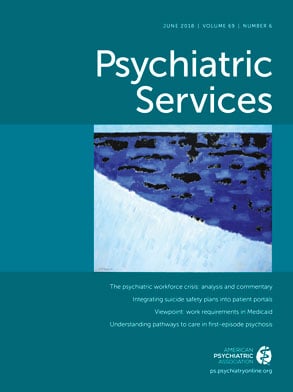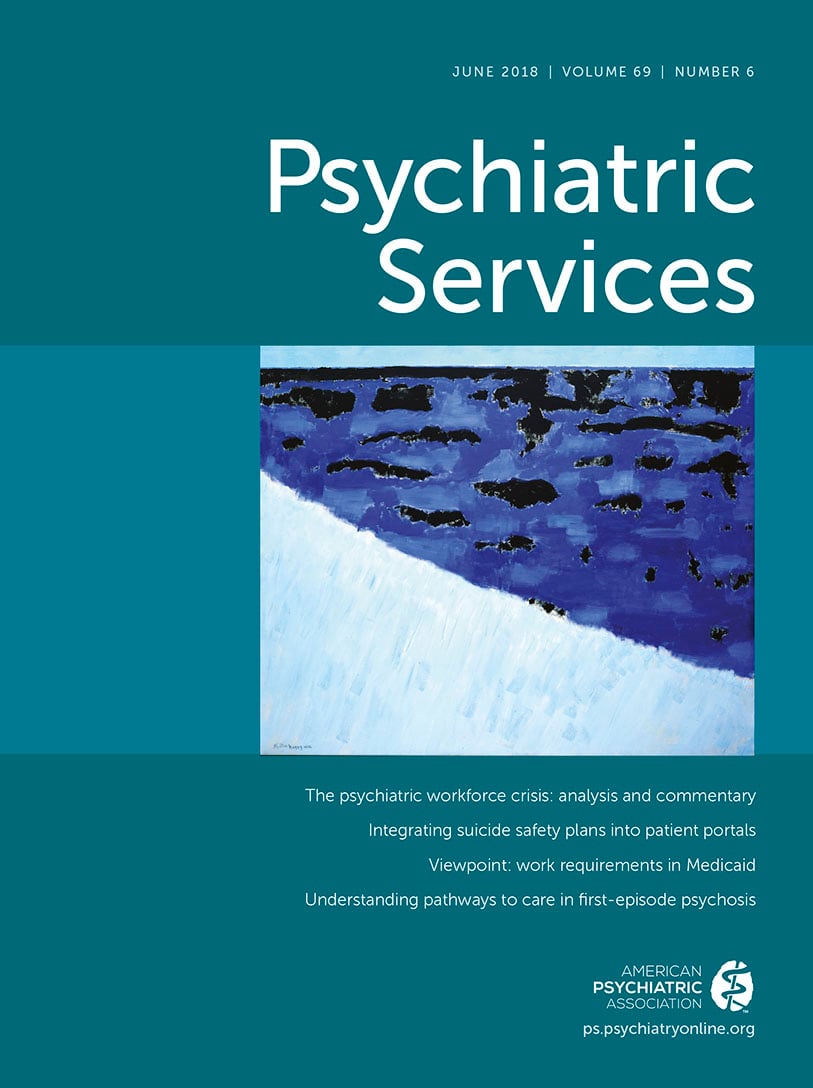At a time when rates of suicide have increased across nearly all demographic groups in the United States (
1), it is important that providers and policy makers think critically and creatively about ways to prevent suicide. Although the World Health Organization recently emphasized the importance of mobile technology in improving the reach of suicide prevention (
2), technology as a suicide prevention mechanism has not been well established. The availability of mental health technologies has indeed grown in recent years, and they have been adapted as a way to foster communication between patients and their providers, including patients who are at risk of suicide. In this column, we consider the role of technology in the prevention of suicide via the integration of safety planning into patient portals and argue that it may serve to increase the accessibility and usability of safety plans for high-risk patients.
Safety Planning
Safety planning is a promising intervention that has shown success in reducing suicidal behaviors and hospitalization (
3,
4). Safety planning involves working with a patient to develop an individualized, prioritized list of possible supports and coping skills to rely on when the patient is experiencing suicidality (
5). There are six basic components of a suicide safety plan, including recognizing warning signs, employing internal coping skills, reaching out to social supports and seeking healthy settings for distraction, contacting the professional care team, and reducing access to lethal means of suicide (
5). In most settings, safety plans are provided to patients as a hard-copy document, which can present challenges to use. We propose that integrating safety plans into accessible technology, such as patient portals, is a novel way to increase safety plan use and prevent suicide death.
Patient Portals and Integration of the Safety Plan
Patient portals are online platforms that allow patients to log in and view various aspects of their electronic medical record. Important aspects of patient portals include summarizing clinical information after visits, offering secure messaging between patient and providers, and providing prescription services. Patients also have the ability to view their health records, engage in health education, and set reminders for prevention services (
6). Patient portals have been shown to increase patient engagement, patients’ sense of participation in medical decision making (
7), and patient-provider communication (
8). This connection between provider and patient expands the scope of care and highlights advancements in the world of technological resources for health.
The Institute for Family Health, a federally qualified health center (FQHC) network in New York State offering both primary care and behavioral health services, has been using a patient portal, MyChart, for communicating with patients, including patients with a history of suicidal ideation. MyChart is the patient portal platform used by Epic Systems, a large and nationally distributed electronic health records system, and is utilized at the institute as a way to increase engagement of patients in their care. One innovative aspect of the institute’s suicide prevention initiative is the integration of the suicide safety plan into MyChart. When the plan is cocreated by the provider and the patient, the safety plan is typed into the patient’s medical record. Including the safety plan in the electronic health record means that patients can access their plan day or night, no matter where they are, assuming that they have an electronic device that allows them to log in.
Integrating safety plans into patient portals fulfills an important need because barriers to use of paper-and-pencil safety plans exist. These include the possibility of misplacement, lack of portability, and lack of accessibility (
9). Barriers to use may be significantly correlated with difficulties following the plan and, ultimately, with more suicide attempts and hospitalizations. One study examining the use of a suicide safety planning app with adults found that the patients reported the app was acceptable and useful, with one patient stating, “I read my safety plan every morning on the train to work” (
10). Another enhancement that the patient portal offers is the ability for all providers, including those not in behavioral health departments, to view patient safety plans and check in as needed regarding suicidality and safety. The ability of all providers to view the safety plan is key to maintaining the safety of high-risk patients at any large health care organization offering integrated behavioral health and primary care, including hospitals and FQHCs.
Another important feature of the patient portal for those with a history of suicidality is the ability to securely message providers, which may help to build trust and rapport. Although providers are not required to respond immediately (in fact, patients are told that they will not and are instructed to call 911 in an emergency), patients are aware that their provider will see the message and respond to their outreach. This method of communication is often listed in the institute’s safety plans. In addition, messaging with providers outside the treatment milieu and discussing the safety plan within the treatment milieu address some of the limitations of paper-and-pencil safety plans, making the plan more of a living document rather than a stagnant piece of paper.
At the Institute for Family Health, uptake of safety plans in the patient portal has been successful on both the provider and the patient sides. In the behavioral health department, there were 1.9 patient portal logins per patient accessing MyChart in 2016. Among psychosocial patients with a history of suicidal ideation, 31% (N=761) were receiving provider messages via MyChart. Other common features that are accessed include rescheduling appointments and viewing the results of medical laboratory tests. These data suggest that the patient portal is being actively used by patients with a history of suicidality.

